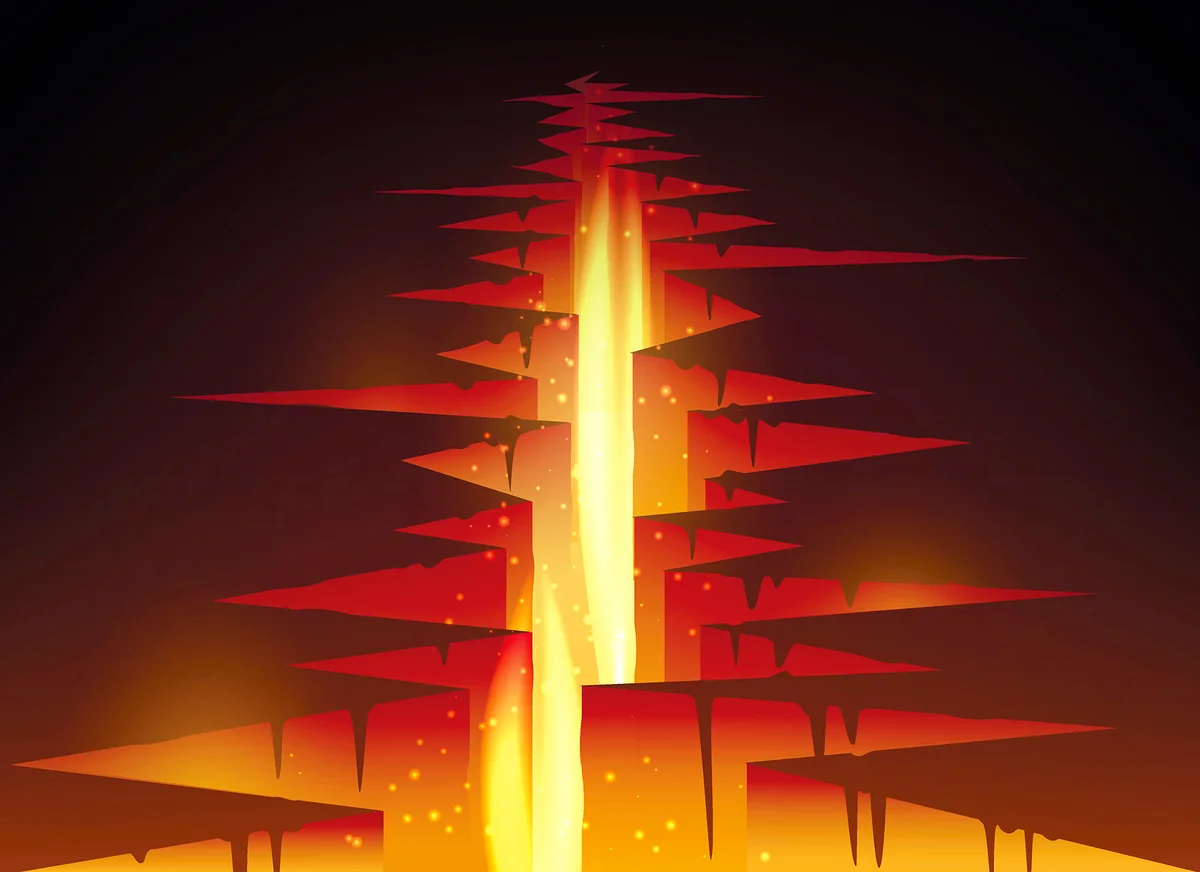
The shaking produced by an earthquake can crack the ground, bring down buildings and cause massive rockfalls. All this destructive power is, astoundingly, just a fraction of a quake’s overall energy.
A new laboratory study in AGU Advances finds that shaking accounts for only 1 to 8 percent of the energy released in an earthquake, while up to a whopping 98 percent of that energy dissipates as heat. The friction of huge rock chunks sliding against one another can spike the temperature of the ground to more than 1,700 degrees Celsius—hot enough to melt quartz and other minerals.
It’s challenging to measure how much of an earthquake’s energy goes to shaking the ground versus breaking rocks versus flash heating, given that quakes start deep below Earth’s surface and happen at unpredictable intervals. To understand this energy budget, Daniel Ortega-Arroyo, now a postdoctoral researcher at the Massachusetts Institute of Technology, and his colleagues created itty-bitty lab earthquakes by pressing centimeter-sized wafers of a powdered granite and magnetic particle mixture between aluminum pistons until the wafers slipped or snapped. They measured this process of cracking under stress with thermometers and piezoelectric sensors that mimic the seismographs used to measure real earthquakes.
On supporting science journalism
If you’re enjoying this article, consider supporting our award-winning journalism by subscribing. By purchasing a subscription you are helping to ensure the future of impactful stories about the discoveries and ideas shaping our world today.
Even these centimeter-scale earthquakes got hot fast. “It essentially went from room temperature to above 900 degrees C in a few microseconds—so extremely, extremely fast,” Ortega-Arroyo says.
Between 68 and 98 percent of the energy released in these lab quakes dissipated as heat, the researchers found. The breaking of the wafer took anywhere from less than 1 percent of the energy to as much as 32 percent, whereas the shaking made up 8 percent or less. Samples that had been more deformed before breaking experienced a little less heating, Ortega-Arroyo says, which indicates that the history of the rocks in a fault might control how much energy goes to heating, rock-breaking and shaking in the next quake.
The new research is important because the energy budget of earthquakes is “a huge unknown,” says Rachel Abercrombie, an earthquake researcher at Boston University, who was not involved in the study but discussed the experiments with the authors before publication. “It’s pretty fundamental to understanding the earthquakes and therefore being able to model them.” Earthquake computer models are used for everything from determining how quakeproof local buildings should be to trying to figure out when a fault will break next and how big the resulting quake will be.
One advantage of the work is that it used a new technique measures the alignment of magnetic minerals in heated rock to help interpret the temperature change, says Heather Savage, an earthquake researcher at the University of California, Santa Cruz. Savage, who wasn’t involved in the study, does field analyses of melted rocks on old fault lines. These real-world studies also use magnetic analysis, she says, and having the same measurements in the real world and in the lab can help scale the findings from a centimeter-sized wafer to a multikilometer-long fault.
“How do I extrapolate this to something like an earthquake on the San Andreas fault?” Savage says. “That’s probably a pretty big question for us to mull over.”



